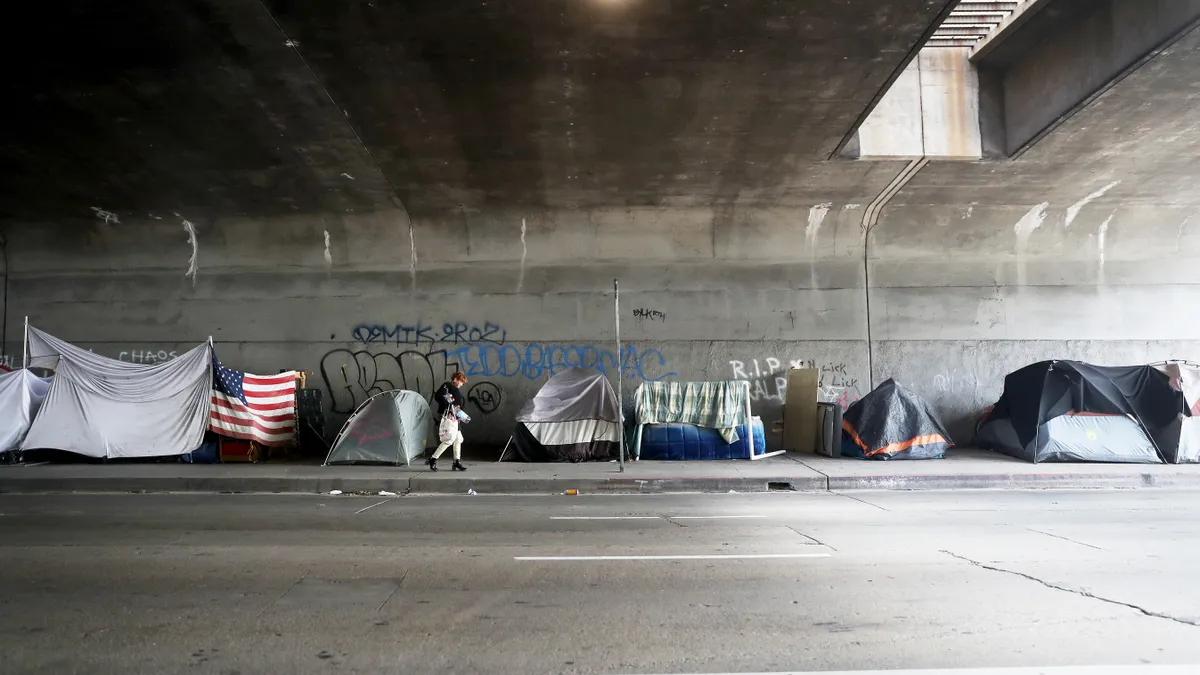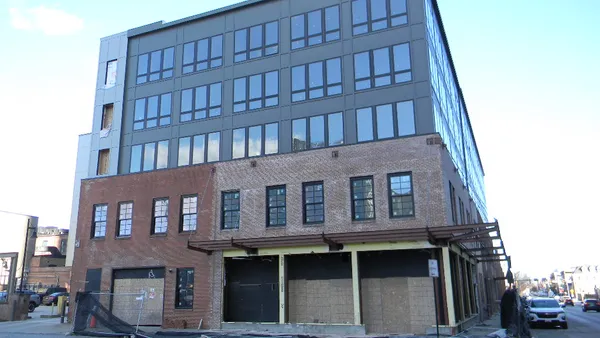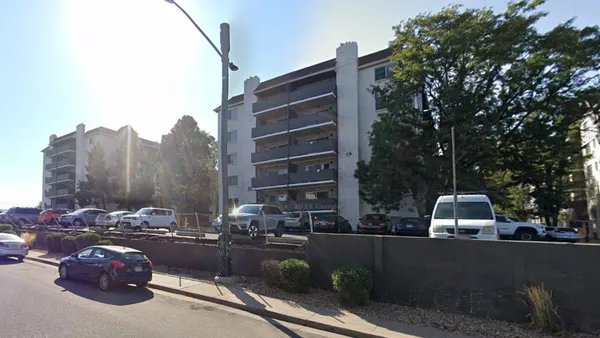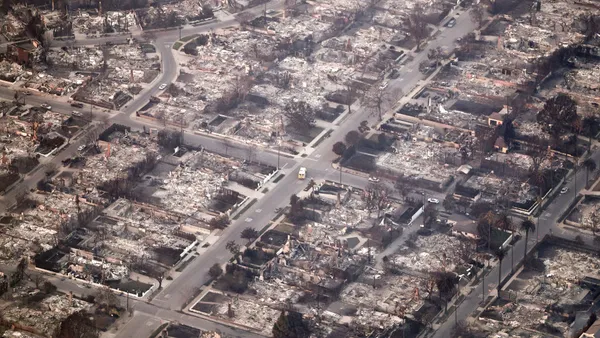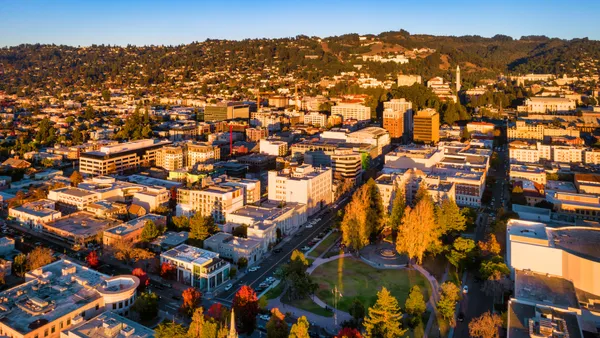Dive Brief:
- Los Angeles Mayor Karen Bass on Friday ordered city officials to identify underused or unused properties the city could turn into shelters or permanent housing with on-site supportive services for individuals experiencing homelessness.
- The executive order gave officials 20 days to compile a list of properties under any city department or bureau’s control, including vacant, surplus or underutilized rights of way. The city’s chief of housing and homeless solutions will then assess each property to determine whether it’s suitable for such uses. After receiving the assessment, the mayor’s office will have 30 days to designate the sites it will use for shelters or permanent housing, the directive stated.
- The city will give preference to sites that have easy access to infrastructure such as water, power and sewers and are near “assets” that support of people experiencing homelessness. Construction of those sites will be expedited, and they will be exempt from certain code requirements, parking requirements and site plan reviews.
Dive Insight:
Since taking office in December, Bass has taken several measures aimed at providing shelter and housing for people experiencing homelessness. While campaigning, the first-term mayor promised to find shelter for 17,000 of the estimated 40,000 people experiencing homelessness in the city during her first year in office, the Los Angeles Times reported.
Bass declared a state of emergency on homelessness that instructed city departments to speed up the approval process for affordable housing development projects. She also launched the “Inside Safe” program, providing immediate shelter for unsheltered people in hotel and motel rooms. Her latest directive aims to quickly make use of city properties to construct additional housing and shelter space.
“I am making sure that the City of Los Angeles holds nothing back when it comes to bringing people inside and providing them with the support they need to stay inside for good,” Bass said in a statement. “To save lives, restore our neighborhoods and house Angelenos immediately, we must urgently prioritize underutilized existing city-owned property.”
Unsheltered homelessness has become a growing challenge in many U.S. cities, increasing 3.4% nationwide between point-in-time counts in 2020 and 2022, according to the U.S. Department of Housing and Urban Development. Point-time counts aim to tally all individuals experiencing homelessness on a single night each year.
Local governments have used various strategies and tactics to address the crisis, collectively spending billions on affordable housing and shelters. Some municipalities have banned camping in public spaces, while others are implementing housing-first policies that provide unhoused individuals with permanent housing and supportive services such as drug treatment, mental health care and job training.



